In my blog last month, I discussed making emotions and feelings our friends rather than the enemy. I want to add to that further by looking at the emotional frequency and their importance.
In the 11th century, a Benedictine monk called Guido d’Arezzo pioneered frequency scales from specific tones of musical sound which became known as the Solfeggio frequencies. The frequencies have been used throughout history, both in Western Christianity and Eastern religions by Buddhist monks and Indian Sanskrit in prayer and chants.
Research has proved that the OM Mantra, for example, was made up of frequencies that induce gamma waves which support mental wellness. In this peaceful waking state, we are receptive to cognitive processing, problem-solving and heightened perception.
 Growing up with traditional Buddhist practices, I often thought that attending the temple for prayer was tedious. However, as I sat through the Thai Buddhist monks chanting, I instantly felt mentally relaxed, peaceful and calmed. The melodic sounds of the chant were mesmerising.
Growing up with traditional Buddhist practices, I often thought that attending the temple for prayer was tedious. However, as I sat through the Thai Buddhist monks chanting, I instantly felt mentally relaxed, peaceful and calmed. The melodic sounds of the chant were mesmerising.
The sound frequency has a powerful effect on our emotional body. Thus, the emotional frequency will inevitably have an influence on the body-mind.
The body, feelings and mind are connected to the soul (or spirit) as wholeness.
I found that when feeling overwhelmed, I am unable to think logically or clearly. My body will react in response to the mental shut down. Physiologically, my heart would beat furiously, quickening the breath. My muscles tighten, and the body becomes hot and flush. Emotionally, I feel panicky, stressed, anxious and possibly fearful and embarrassed by the reaction of the body. This was when I realised that the emotions have gotten ‘hold’ on me. In this state, it feels like I a drowning. The body-feelings-mind interact in a wholistic system governed by the laws of cause and effect.
I’m here to share that, in whatever state, mood, or disposition that you find yourself in, you do have a choice. Amongst feeling overwhelmed, there will be a quiet, soothing ‘inner voice’ that asks whether you want any help. Some may say that this inner voice is your intuition. I know this part of myself as my ‘soul’ or ‘spirit’.
Recently, while working with a highly emotional client, I learnt to accept that some people DO not want help, even though a part of them got them to my therapy room. The client is simply not ready, willing or able to give up on their subconscious gain. This is fine by me, as I realised that I am not a rescuer. As a therapist, I am a facilitator. I facilitate healing, wellness and holistic processes.
With that in mind, I learnt to let go and just trust. Trust that I will simply know.
What is emotional frequency?
An emotion is a ball of energy, varying in size and shapes. Energy moves around the body as vibrational frequency. It forms and transforms, it changes, interchange and impermanent. It flows around your body around your morphic field, also known as the aura. Depending on the situation, circumstance or experience that you are facing, the emotional energy may circulate around an organ or meridians. If the emotions are suppressed, repressed or disrupted from expressing, it will become lodged within a specific area in the body.
Emotional frequency or emotional resonance is the vibrational frequency that emotion generates, which I came to know as energy frequency. Each emotion has an energy which generates and measurable as a frequency in Hz (hertz), used in connection to energetic currents, electromagnetic waves (light, radar etc.) and sound.
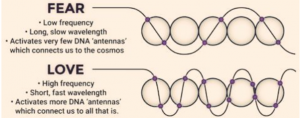 Love, for example, has a high frequency around 500Hz, whereas, fear has a low frequency at 100Hz. When you feel love for yourself or others, you cannot and will not feel the fear. Thus, it is worth choosing a positive feeling or emotion, which is better for health and wellness.
Love, for example, has a high frequency around 500Hz, whereas, fear has a low frequency at 100Hz. When you feel love for yourself or others, you cannot and will not feel the fear. Thus, it is worth choosing a positive feeling or emotion, which is better for health and wellness.
How to raise your emotional frequency?
I recently became qualified as an Emotion Code Practitioner and found that emotions can be released quickly and effortlessly.
Here are ways to raise your emotional frequency.
- Be open-minded
 Being open-minded is a willingness to consider new ideas or concepts without prejudices. An open-minded person will have the ability to considered other perspective, can be empathetic, to others, even if you disagree. In this state, you are flexible in your approach to learning and accepting new options, opportunities, suggestions, and inspirations. With an open mind, you will see things start to manifest, as you become receptive, you will attract like for like.
Being open-minded is a willingness to consider new ideas or concepts without prejudices. An open-minded person will have the ability to considered other perspective, can be empathetic, to others, even if you disagree. In this state, you are flexible in your approach to learning and accepting new options, opportunities, suggestions, and inspirations. With an open mind, you will see things start to manifest, as you become receptive, you will attract like for like.
- Stay hydrated
Have you noticed when you are very upset, your mouth dries up? To raise your emotional vibration, you need to remain hydrated so that your body as flush out toxicity.
- Feel the love
 Love has high frequencies which are beneficial to instantly lift your moods and emotional frequencies. When you feel love and appreciation, negative or low frequencies cannot exist at the same moment. If you find it difficult to ‘feel love’ trying doing something that you truly love. A loving feeling is a feeling of immense happiness, joy, connection, fulfilment, fondness, warmth, and tenderness. It is a blissful feeling towards someone or something. A true loving feeling is unconditional and unbounded. For me personally, I love water, nature and the sounds of a Wren singing in the distant, as I bathed in the warm sunny sky. You get the picture.
Love has high frequencies which are beneficial to instantly lift your moods and emotional frequencies. When you feel love and appreciation, negative or low frequencies cannot exist at the same moment. If you find it difficult to ‘feel love’ trying doing something that you truly love. A loving feeling is a feeling of immense happiness, joy, connection, fulfilment, fondness, warmth, and tenderness. It is a blissful feeling towards someone or something. A true loving feeling is unconditional and unbounded. For me personally, I love water, nature and the sounds of a Wren singing in the distant, as I bathed in the warm sunny sky. You get the picture.
“Love is all there is. Let love be the driving force in your life.” – Unknown.
- Feel the gratitude
 Gratitude has high frequencies also, which can instantly transcend your emotions. It can instantly lift your low moods to a good mood. But, you have to really believe and be grateful. There has to be an element of humbleness within this process in order to feel thankful for something. For example, showing appreciation for your good health, being appreciative of your partner, be thankful to your family and friends by simply saying it out loud. I feel grateful for my good health. I feel grateful to my partner for his love and support. I feel grateful for my family. If you find it hard to say that you are grateful to the person, say it in your mind – they will receive the feeling all the same. Make a list of the things that make you grateful.
Gratitude has high frequencies also, which can instantly transcend your emotions. It can instantly lift your low moods to a good mood. But, you have to really believe and be grateful. There has to be an element of humbleness within this process in order to feel thankful for something. For example, showing appreciation for your good health, being appreciative of your partner, be thankful to your family and friends by simply saying it out loud. I feel grateful for my good health. I feel grateful to my partner for his love and support. I feel grateful for my family. If you find it hard to say that you are grateful to the person, say it in your mind – they will receive the feeling all the same. Make a list of the things that make you grateful.
- Find your Mantra and Affirmation
 You can build a mantra, an affirmation or prayer into your daily life that includes feeling love for yourself and others. A mantra can be something that you repeat during meditations, walking, exercising or when doing a mundane task. An affirmation is a statement that you keep repeating until it becomes second nature. A prayer can be anything that you say with closed eyes to God, The Higher Power, Holy Spirit or the Universe.
You can build a mantra, an affirmation or prayer into your daily life that includes feeling love for yourself and others. A mantra can be something that you repeat during meditations, walking, exercising or when doing a mundane task. An affirmation is a statement that you keep repeating until it becomes second nature. A prayer can be anything that you say with closed eyes to God, The Higher Power, Holy Spirit or the Universe.
Example of a mantra might be: Letting go is easy, Emotions are friends, Emotions are energy, and like all energy – it too will pass.
Example of an affirmation might be: I express my emotions healthily and freely, I am free to express how I feel, I am responsible for the way I feel.
Example of prayer might be: Dear God/The Higher Power/Holy Spirit/Universe, please give me the strength to be with my emotions, to process my emotions healthily, to heal.
- Have fun, smile and laugh
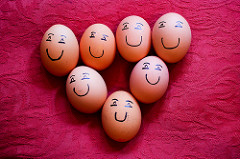 Laughing is potent and instantly uplifting. It has many health benefits, physically and emotionally. Most essentially, it is contagious, so be warned.
Laughing is potent and instantly uplifting. It has many health benefits, physically and emotionally. Most essentially, it is contagious, so be warned.
Some of the things that make me smile include looking at pictures of my loving children, looking at a picture of myself as a toddler and listening to soothing music. Having fun for me simply mean doing fun stuff such as making a dress, getting my hands dirty working with clay pottery or playing charades. The thing that made me laugh is a slap-stick comedy, but not something like ‘Jackass’ or ‘YBF’ where someone or something is being hurt or falling. Find your laughter. Find your smile and find what is fun for you.
I have not included the usual practical approaches such as meditation, exercises, eating healthily to the list above on purpose because they are all common practices that everyone should regularly adhere to for positive mental health and wellness.
If you would like a personal experience of an energy healing session, please visit Energy Works for more details.
“Love is the only force capable of transforming enermy into friend.” – Martin Luther King Jr.
Do you find this blog helpful? If you like this post, I love to hear from you on my Twitter Page.



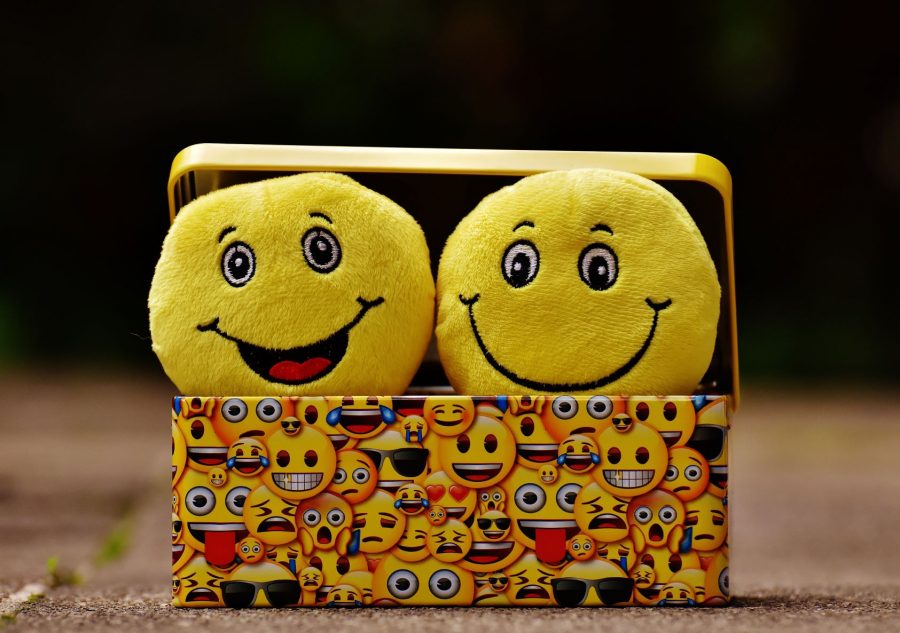
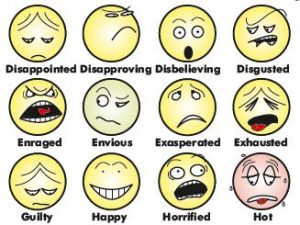



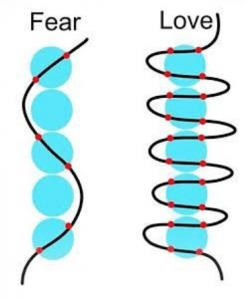 It often helps to name our emotions. This is because emotion has an
It often helps to name our emotions. This is because emotion has an